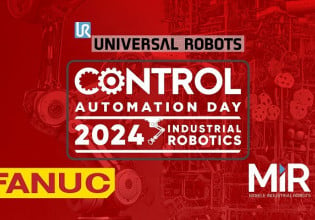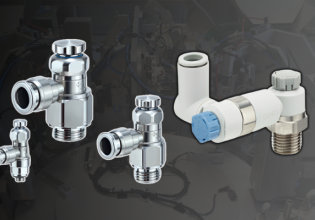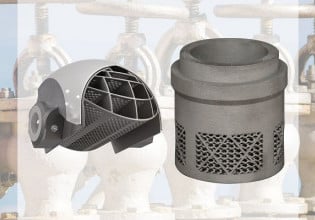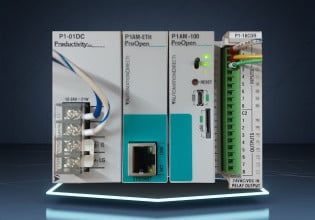Power and Precision | Electrical Motor-Driven Linear Actuators
Electrical control holds many advantages over fluid power with precise control, feedback, and a lower-maintenance system. But how do electric actuators work, and how do they stack up against fluids?
The demand for precise and efficient motion control systems has given rise to various actuation technologies. Among these, electrically driven motor actuators have emerged as a novel and modern option, offering a versatile and reliable solution for a wide range of applications. In this article, we delve into the fundamentals of electrically driven motor actuators, discussing their components, equipment requirements, and optimal applications. Additionally, we'll compare them to their hydraulic counterparts, highlighting the advantages and disadvantages of each.
Understanding Electrically Driven Motor Actuators
Electrically-driven motor actuators are devices designed to convert electrical energy into mechanical motion, most often in a linear direction. They play a crucial role in automating processes across industries, from manufacturing and robotics to aerospace and automotive applications. The key components of an electrically-driven motor actuator include the motor, gearbox, drive mechanism, and feedback system.

Figure 1. Two standard electrically driven linear actuators. Image used courtesy of Continental Hydraulics
Motor
Electrically driven motor actuators commonly use electric motors such as servo motors or stepper motors. These motors are chosen based on the specific requirements of the application, considering factors like speed, torque, and precision. Servo motors are known for their high torque and precise control, making them suitable for applications demanding accurate positioning. Stepper motors, on the other hand, provide precise motion control in discrete steps and are often chosen for applications with lower speed requirements.
Gearbox
The gearbox in an electric actuator serves to amplify the torque generated by the motor, allowing for greater force output. This is especially beneficial in applications where high force and low speed are required. Different types of gearboxes, such as planetary and worm gearboxes, can be used depending on the specific needs of the application. Planetary gearboxes are known for their compact design and high efficiency, making them ideal for applications with limited space.
Drive Mechanism
Converting rotary motion from the motor into linear motion for the axis can be a challenge, but a few methods exist. For most integrated actuators, a lead screw or ball screw is rotated by the motor, and a carriage moves along the screw, much like a nut moves up and down a bolt as it rotates. This provides both power and precision as one full rotation of the screw yields only a short travel distance. On the downside, it is relatively slower than other mechanisms.
Two other methods exist for linear motion. The toothed timing belt and the rack-and-pinion gear set. While both are common for long-travel axes, they are usually not found inside the integrated body of linear actuators that are comparable to fluid cylinders.

Figure 2. Closeup of the ball screw mechanism inside a linear actuator. Image used courtesy of Adobe Stock
Feedback System
To ensure accurate and reliable motion control, electric actuators are equipped with feedback systems, such as encoders or resolvers. These devices provide real-time feedback on the position, speed, and direction of the actuator, enabling closed-loop control systems to make adjustments as needed.
Applications of Electrically Driven Motor Actuators
Electrically driven motor actuators find widespread use in various applications due to their adaptability and precision. Some notable applications include the following.
Manufacturing Automation
Electric actuators are extensively used in manufacturing processes, such as CNC machining, pick-and-place operations, and material handling. Their ability to provide precise and repeatable motion makes them ideal for tasks requiring high accuracy.
Robotics
In robotic systems, electric actuators are employed to control the movement of robotic arms, grippers, and other components. The versatility of electric actuators allows for complex and precise motion in robotics applications.
Aerospace and Automotive Industries
Electrically driven motor actuators are commonly used in aircraft and automotive systems for tasks like controlling flight surfaces, throttle positioning, and braking. Their lightweight design and precise control make them well-suited for these applications.
Understanding Hydraulically-Driven Linear Actuators
Hydraulic actuators are devices designed to convert hydraulic pressure into mechanical motion. The key components of a hydraulic actuator include a piston, cylinder, the ports. Here's a breakdown of each of these components.
Piston
The piston and piston rod are sealed to the inside of the cylinder, with fluid pushing on the piston to extend and retract its direction of motion.
Cylinder
The fully sealed outer housing of the actuator provides both protection for the fluid and seals inside, but also a strong seal against the high-pressure fluid, and many options for mounting the cylinder to its machine application.
Ports
The inlet and outlet ports allow the fluid to enter to extend or retract the cylinder. If fluid enters one port, it must be allowed to vent out the other port. In a pneumatic cylinder (mentioned next), one of the ports may be vented to the open air and a spring returns it to a normal position. These are called single-acting cylinders.

Figure 3. Typical components of a hydraulically driven linear actuator. Image provided by the Control Automation engineering team
Pneumatics
Similar to hydraulic actuators, pneumatic actuators rely on fluid power principles but use air rather than hydraulic fluid as the working medium. The basic components of a pneumatic system include the actuator (cylinder), as well as control valves and a compressed air supply. Pneumatic actuators are commonly used in applications where moderate force and rapid response are required, such as in automation, robotics, and HVAC systems. Like hydraulic actuators, pneumatic actuators offer simplicity, reliability, and cost-effectiveness in operation. However, pneumatic actuators typically operate at lower pressures and are more suitable for applications where cleanliness and environmental concerns are more critical compared to hydraulic systems.
Comparative Analysis: Electric vs. Fluid Actuators
While both electric and fluid-powered actuators have their strengths, the choice between them often depends on specific application requirements. Here's a comparative analysis highlighting the characteristics of hydraulic actuators in relation to electric actuators.
Force and Power
Hydraulic actuators excel in applications that demand a high force output. Their ability to generate substantial power makes them suitable for heavy-duty tasks, whereas electric actuators may be more efficient in applications requiring lower force but high precision.
Speed and Precision
Electric actuators generally offer higher speed and precision compared to fluid actuators, especially pneumatic ones. The closed-loop control systems in electric actuators, coupled with advancements in motor technology, enable precise and responsive motion control.
Energy Efficiency
Electric actuators are typically more energy-efficient than hydraulic actuators. Hydraulic systems may experience energy losses due to fluid friction and leaks, resulting in lower overall efficiency.
Maintenance and Environmental Impact
Hydraulic systems may require more frequent maintenance due to the potential for fluid leaks and contamination. Additionally, hydraulic fluid disposal can pose environmental challenges. Electric actuators, with fewer moving parts, often require less maintenance and have a smaller environmental footprint.
Compactness and Weight
Electric actuators are generally more compact and lightweight than hydraulic actuators. This makes them suitable for applications with space constraints or weight limitations, such as robotics and aerospace.
Electrical Motion Control for Automation
Electrically driven motor actuators have revolutionized the field of motion control, providing a reliable and precise solution for a wide range of applications. Their versatility, combined with advancements in motor technology and control systems, has made them a preferred choice in industries where precision and efficiency are paramount. While hydraulic actuators still have their place in certain applications, the advantages offered by electric actuators make them an increasingly popular choice in the ever-evolving landscape of industrial automation.






